A uniform rod is of length 6 m and mass 12 kg. One end of this rod is hinged to a point at a depth 3 m below the free surface of water. Find (1) the weight to be suspended at the other end, so that mof length of the rod remains immersed in water, (ii) the magnitude and direction of the reaction at the hinge (spgravity of the material of the rod 0.5)
The rod makes angle with the vertical shape coseθ=35 and sin θ=43 Let .a. be the area of cross section of the rod.
∴ weight of the rod mg (6) 500 g N, Force of buoyancy F = (5a) 1000 g N
IF W N be the weight at the end (required), then taking moments about the hinge and equating it to zero
for rotatory equilibrium),(5000ag)2.5 sin θ)-(3000 ag)3 sin θ-W (6 sin θ)=0
Since sin θ≠θ ,so cancelling ag sin θ throughtout.
12500-9000-6Wag=3500⇒wg=35006a
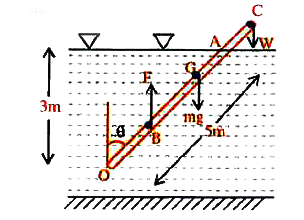
Now, the mass of the rod=12 kg ⇒(6a)×500=12⇒a=1250m2
∴Wg=35006×250=2.33kg wt. or W=22.837 N
ii)Now, upthrust F=5000×1250 g=20 gN
IFR be the verical reaction (up) at the hinge, then for vertical equlibrium of the rod, R+F-mg - W=0
⇒R+20g−12g−2.33g=0⇒R=-5.67kg 2t.(or) -55.57N
The -Ve sign implies that ,the reaction is downwards of magnitude 55.57N
Topper's Solved these Questions
- FLUID MECHANICSBOOK - AAKASH SERIESCHAPTER - FLUID MECHANICSEXERCISE - Test your self
6 Videos
- FLUID MECHANICSBOOK - AAKASH SERIESCHAPTER - FLUID MECHANICSEXERCISE - Short answer type questions
13 Videos
- FLUID MECHANICSBOOK - AAKASH SERIESCHAPTER - FLUID MECHANICSEXERCISE - ADDITIONAL PRACTICE SHEET (ADVANCED) (Straight Objective Type Questions)
5 Videos
- EXPANSION OF SOLIDS BOOK - AAKASH SERIESCHAPTER - EXPANSION OF SOLIDS EXERCISE - Questions for Descriptive Answers
5 Videos
- FRICTION BOOK - AAKASH SERIESCHAPTER - FRICTION EXERCISE - ADDITIONAL PRACTICE EXERCISE PRACTICE SHEET (ADVANCED) (MORE THAN ONE CORRECT ANSWER TYPE QUESTIONS)
1 Videos
Similar Questions
A rod of length 6m has a mass of 12kg. It is hined at one end of the rod at a distance of 3m below the water surface.
a.What must be the weight of a block that is attached to the other end of the rod so that 5m of the rod's length is under water?
b. Find the magnitude and direction of the force exerted by the hinge on the rod. The specific gravity of the material of rod is 0.5.
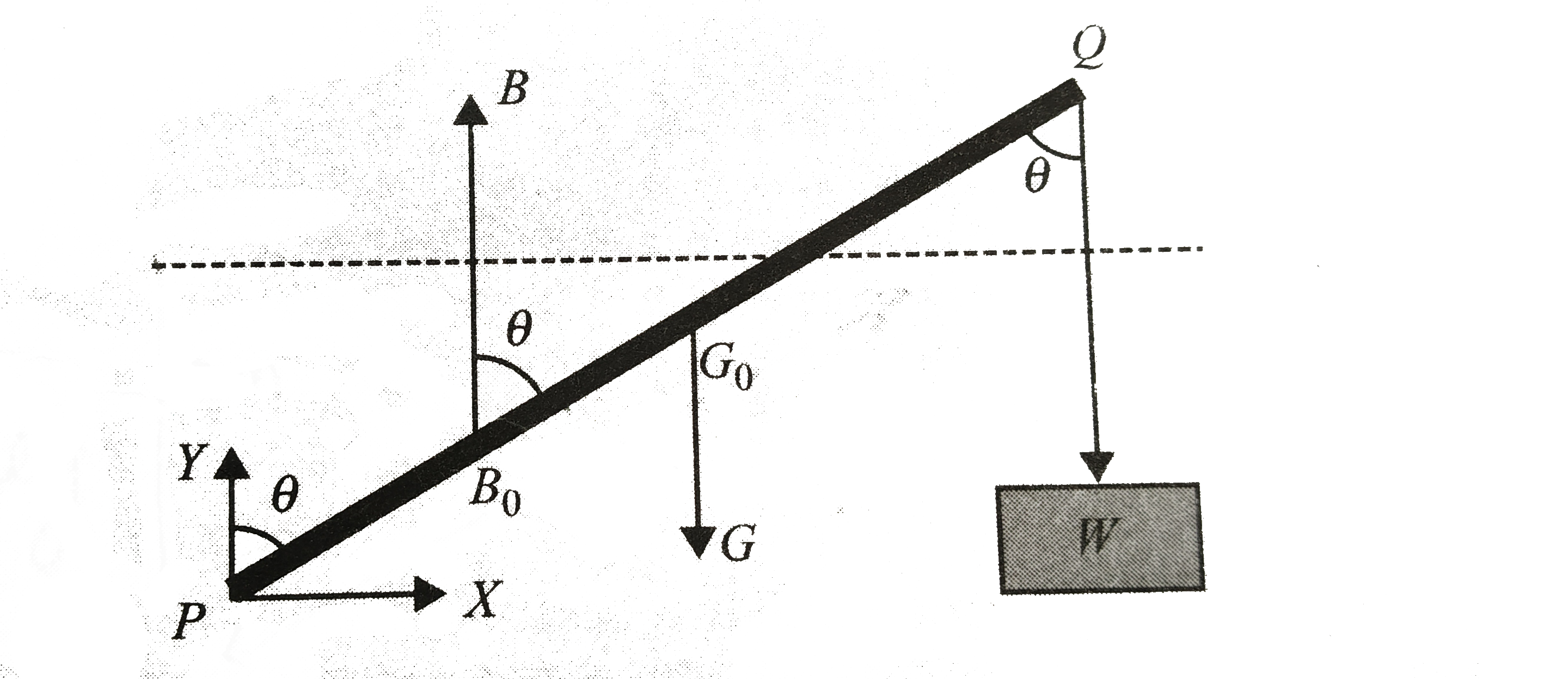
View SolutionA rod of length 6m has a mass of 12kg. It is hinged at one end of the rod at a distance of 3m below the water surface.
a. What must be the weight of a block that is attached to the other end of the rod so that 5m of the rod's length is under water?
b. Find the magnitude and direction of the force exerted by the hinge on the rod. The specific gravity of the material of rod is 0.5.

View Solution
Knowledge Check
A rod is hinged vertically at one end and is forced to oscillate in a vertical plane with hinged end at the top, the motion of the rod:
Ais simple harmonicBis oscillatory but not simple harmonicCis pericolic but not oscillatoryDmay be simple harmonicA rigid mass less rod of length L is hinged at its one end a weight W is hung at a distance l(<L) from this end.
What is force P should be applied upwards at the other end so that the rod remains in equilibrium horizontally ?
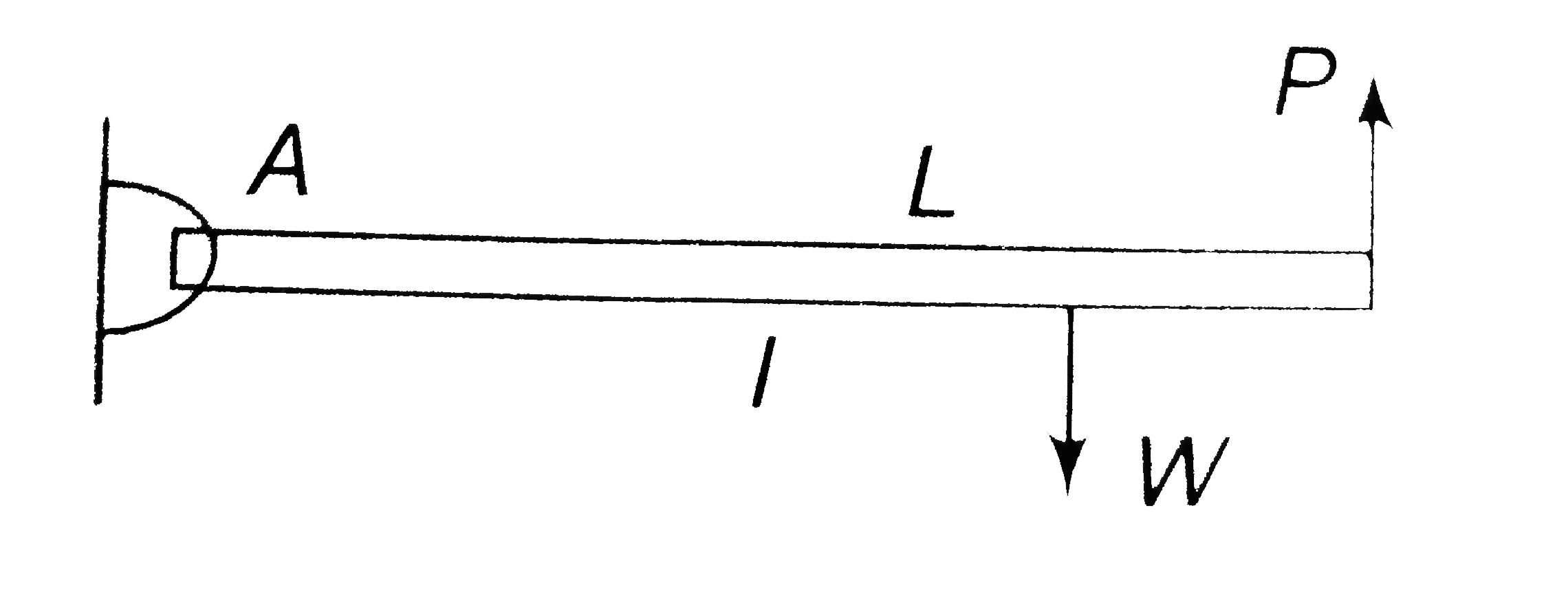 .AW(L−l)LBW(L−l)lCWlLDWLl
.AW(L−l)LBW(L−l)lCWlLDWLlThere is a rod of length l and mass m. It is hinged at one end to the ceiling. The period of small oscillation is
AT=2π√2l3gBT=π√l3gCT=2π√l3gDT=2π√lg
A thin uniform rod of length 2l and specific gravity 3/4 is hinged at one end to height l/2 above the surface of water, with the other end immersed. Find the inclination of rod in equilibrium
View SolutionThere is a rod of length l and mass m. It is hinged at one end to the ceiling. The period of small oscillation is
View SolutionA rod AB of mass M and length L is shown in figure. End A of rod is hinged and end B is lying on the ground. Find the Vertical component of the force applied by the hinge
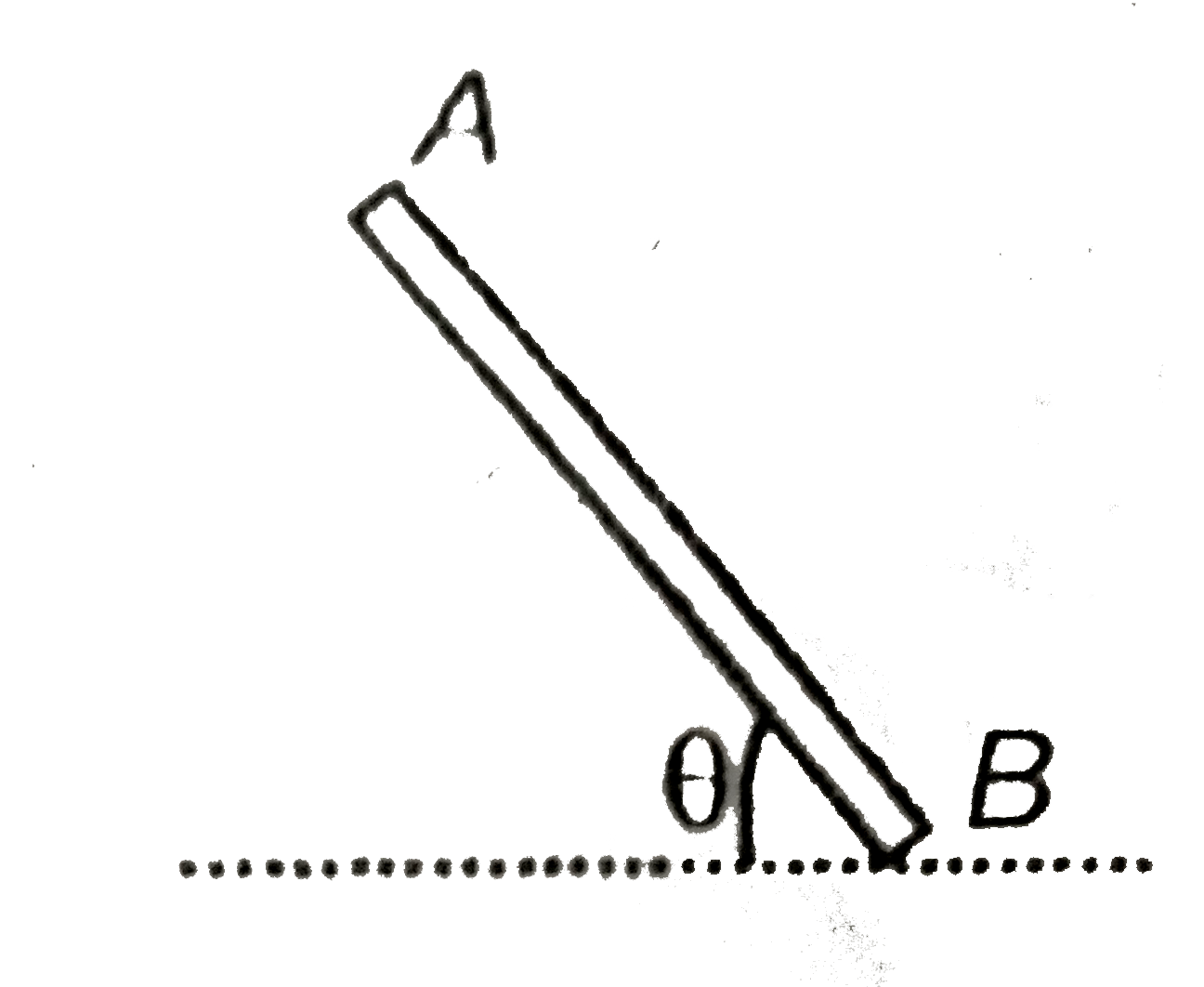
Vertical component of the force applied by the hinge
View SolutionA uniform rod AB of mass 2kg is hinged at one end A. The rod is kept in the horizontal position by a massless string tied to point B. Find the reaction of the hinge (in N) on end A of the rod at the instant when string is cut. (g=10m/s2)
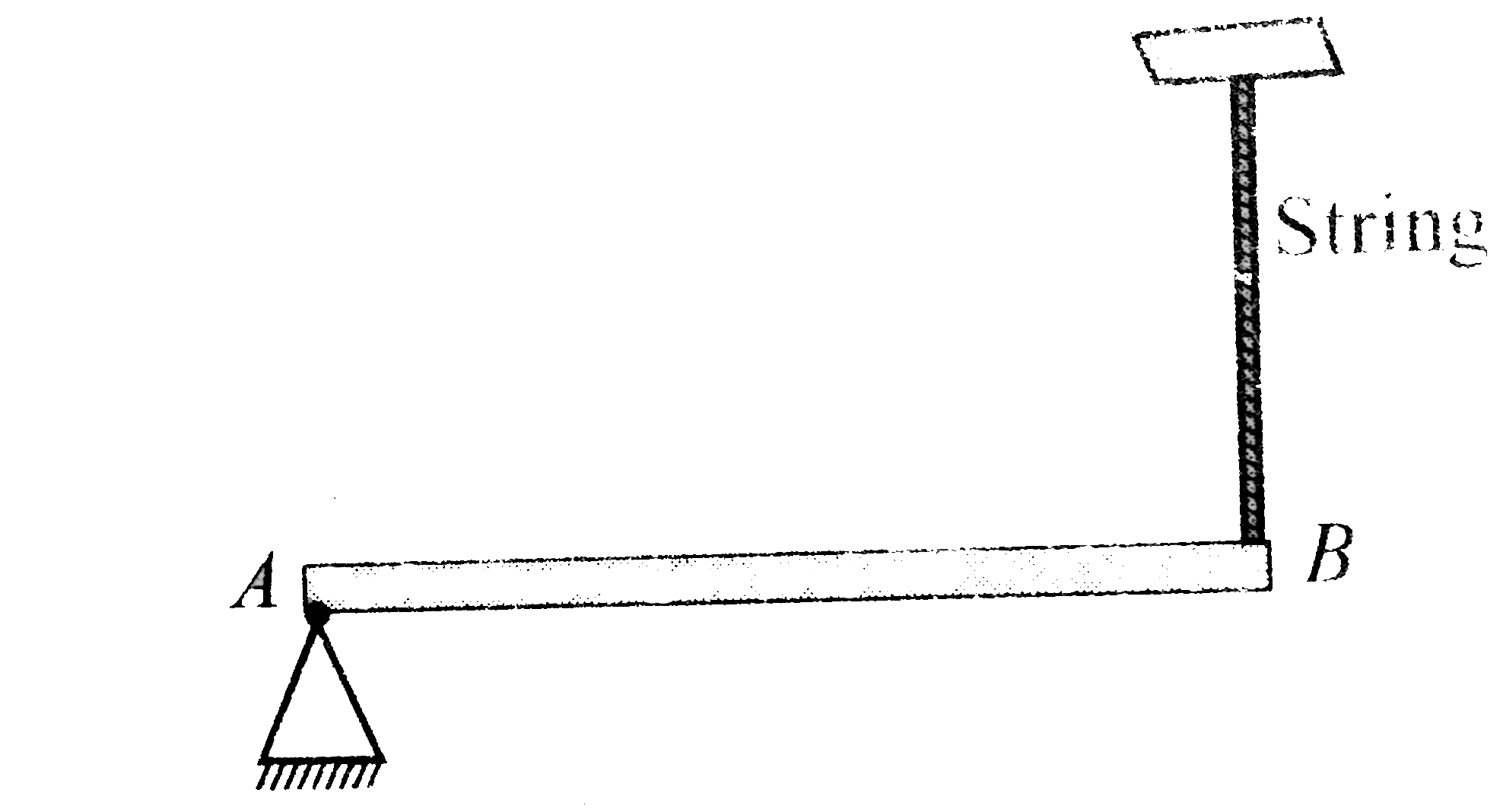
View SolutionA uniform rod of mass m and length l is fixed from Point A, which is at a distance l/4 from one end as shown in the figure. The rod is free to rotate in a vertical plane. The rod is released from the horizontal position.

What is the reaction at the hinge, when kinetic energy of the rod is maximum?
View Solution
